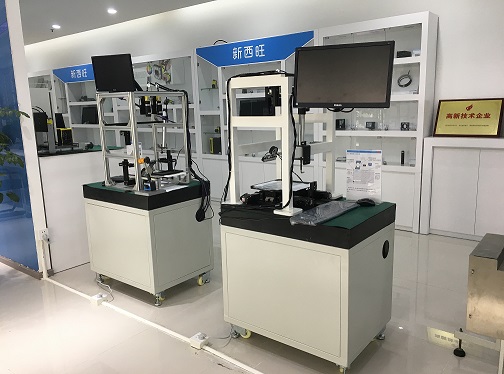In the process of industrial visual inspection, machine vision inspection equipment has the advantages of relatively high automation, high efficiency, high precision and poor habitual conditions, which has opened a "new horizon" for domestic industrial automation. Its composition structure usually consists of the following components:

1. Industrial cameras: CMOS cameras, CCD color cameras, area scan cameras, line scan cameras, infrared cameras, high-speed cameras, 1394 interface cameras.
2. Industrial lenses: camera lenses, magnifying glasses, high-resolution lenses, image scanning lenses, condenser lenses, telescopes, camera lenses.
3. Light source: LED light source, xenon illumination system, ultraviolet illumination system, infrared light source, optical fiber illumination system software, fluorescent illumination system.
4. Image processing system software: optical text, recognition system, automation/robotics, infrared image system software.
5. Optical system: microscope, laser scanner, intelligent electronic video endoscope, industrial endoscope.
6. Board: black and white image capture card, image compression/decompression board, color capture card, 1394 interface board, image processing board, etc.
7. Software package: image processing software, machine vision software tools.
8. Other auxiliary parts: calibration block, grating, enclosure, wiring and connector, power supply, base plate, etc.
Common application industries for machine vision inspection equipment:
1. Battery product testing equipment: detection of foreign bodies, scratches, indentations, poor earwax, pollution, corrosion, pits, earwax burns, poor coding, blurred text and other appearance defects of battery products;
2. PCB circuit board testing equipment: PCB circuit board product shape, size, pin and patch detection, solder joint, direction error and other integrity testing;
3. Precision parts testing equipment: measurement of the vertical and horizontal height, diameter and other dimensions of precision parts such as threads, bearings, gears, scratches, scratches, defects, etc.;
4. Electronic component inspection equipment: size measurement of connectors, capacitors, resistors, etc., defects such as offset, deformation, and deficiency of PIN pins, printing text inspection, etc.;
5. Food packaging testing equipment: appearance integrity testing, barcode identification, and tightness testing of food packaging; Beverage screening and color screening, liquid testing, production date, shelf-life text recognition; Damage and cleanliness inspection of empty bottles on the filling production line;
6. Pharmaceutical packaging testing equipment: measurement of the length, height, diameter and other dimensions of pharmaceutical plastic bottles and glass bottles, and detection of defects such as damage and black spots;
testing equipment for textiles and garment accessories; Dimensional measurement, appearance defect inspection and label text inspection of textile and garment accessories (such as metal buttons, plastic buttons, etc.).
Regarding the composition of machine vision inspection equipment and commonly used application industries, Xinxiwang explained here, I believe you already have a certain understanding. Of course, if you need to further understand the quotation and technical solutions of machine vision products, you can call the hotline: 028-62705808 We will serve you throughout the process! Thank you for your support!
Phone:028-62705808
Fax:028-62705808
Mobile Phone:18215640190
Email:sales@cdxiwang.com
Address:2-8-6, Chen Electric Technology Innovation Park, 68 Shuangbai Road, High-tech West District, Chengdu